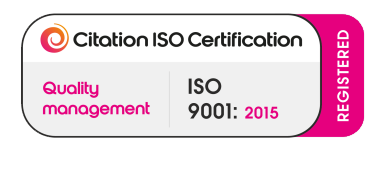The upcoming ISDN switch-off is a significant milestone in the evolution of business communication. By January 31st, 2027, traditional ISDN and PSTN lines will be fully phased out. This decision was made due to the ageing infrastructure and the need for more advanced solutions to meet the demand.
For businesses still relying on ISDN, this shift may seem disruptive as it impacts daily operations. However, the transition also presents an opportunity to future-proof communication systems by adopting Voice over Internet Protocol (VoIP).
Studies show that companies adopting VoIP can reduce communication costs by up to 40%. This means it’s time for businesses to embrace the change and remain competitive.

Source: Dialpad
What Does the ISDN Switch-Off Mean?
The ISDN shut-off in 2025, now postponed to January 31, 2027, refers to the gradual phasing out of traditional Integrated Services Digital Network (ISDN) and Public Switched Telephone Network (PSTN) services. These systems, which have powered voice and data communications for decades, are now being replaced by modern alternatives like Voice over Internet Protocol (VoIP).
ISDN lines rely on circuit-switched technology, which is far less efficient than the packet-based data transmission used by VoIP and fibre broadband systems. For businesses, the switch-off means that existing ISDN services will no longer be available, so they need to integrate VoIP into their systems.
As businesses switch, it’s also essential to implement proper threat modelling to secure your communication systems and reduce vulnerabilities during the transition.
Why is the ISDN Switch Off Happening?
This transition is mainly happening due to the limitations of ISDN systems, such as their rigid infrastructure, high maintenance costs, and inability to meet the demands of modern business communication.
ISDN networks were introduced in the 1980s and were revolutionary for their time. However, the technology has now become outdated, and it’s quite expensive to maintain such an ageing infrastructure. Additionally, ISDN lines lack the scalability needed for businesses today. Adding new lines requires physical installation, making it difficult and time-consuming
Another issue with ISDN is that it cannot support advanced features like video conferencing, unified communication platforms, or real-time collaboration tools. Alongside these limitations, growing concerns about zero-click malware highlight the need for modern systems like VoIP, which offer better security measures and adaptability.
What is VoIP?

Source: Nextiva
VoIP technology allows you to make voice calls using the internet instead of traditional telephone lines. It converts voice signals into digital data packets transmitted over an internet connection and reassembled on the receiving end.
VoIP is one of the best ISDN alternatives and is quickly becoming the go-to solution for businesses and individuals alike due to its flexibility, cost-effectiveness, and advanced features.
Key features of VoIP include:
- Cost Savings: VoIP eliminates the need for expensive telephone lines and long-distance charges.
- Flexibility: Make and receive calls from anywhere with an internet connection using smartphones, laptops, or VoIP-enabled desk phones.
- Advanced Features: Includes video conferencing, call forwarding, voicemail-to-email, and more.
What is the Difference Between ISDN and VoIP?

Source: Yeastar
Here’s a clear comparison of ISDN and VoIP to help you understand the differences between the two services:
| Aspect | ISDN | VoIP |
|---|---|---|
| Technology | It uses circuit-switched technology to transmit voice and data. | Offers basic features like voice calls and faxing. |
| Cost | Requires expensive installation, maintenance, and line rental fees. | More cost-effective with lower setup and operational costs. |
| Features | Offers basic features like voice calls and faxing. | Includes advanced features like video calls, call forwarding, voicemail-to-email, and integration with other digital tools. |
| Environmental Impact | Consumes more energy due to older infrastructure. | More energy-efficient and aligns with modern sustainability efforts. |
| Use Cases | Commonly used in traditional office setups and older industries. | Preferred by modern businesses and remote teams because of its versatility. |
| Setup Time | Requires physical setup and coordination with service providers. | Quick and easy to set up with minimal hardware requirements. |
Why Should You Switch to VoIP?
The transition from ISDN to VoIP is more than just a technological upgrade; it’s a strategic decision. Here are some VoIP benefits for businesses of all sizes:
1. Future Proof
With ISDN being phased out globally by 2027, VoIP is set to become the future standard for communication. Unlike traditional systems, VoIP is designed to evolve with technological advancements.
According to Global Market Insights, the VoIP market size is projected to increase to over $100 billion by 2032. This shows the increasing adoption of VoIP technology among businesses.

Source: Spherical Insights
2. Cost Effective
One of VoIP’s most significant advantages is its cost-effectiveness. It eliminates the need for expensive hardware, maintenance, and traditional line rentals. Additionally, VoIP cuts long-distance call charges, allowing unlimited international communication at minimal rates.
By saving on operational costs, businesses can allocate resources to other essentials while maintaining efficient communication.
3. Mobile Reliable
VoIP’s flexibility allows employees to make and receive calls from anywhere with an internet connection using a smartphone. This makes it ideal for remote and hybrid work environments. Reports show that remote work has grown by 159% since 2009 in the U.S. alone, which means the need for VoIP will only increase in the next few years.
The VoIP systems have built-in redundancies and backups, ensuring reliability even during network outages.

Source: Job Duck
4. Scalable
As businesses grow, communication needs to evolve accordingly. This is why most businesses are shifting towards VoIP, which offers unmatched scalability and allows companies to add or remove users with a few clicks—no need for physical installations or complex upgrades.
VoIP systems can support businesses of all sizes, from startups to large enterprises, without requiring significant infrastructure changes.
How to Switch to VoIP to Future-Proof Business Communications
Switching to VoIP is not as big a task as many people believe. It’s actually a straightforward process that addresses modern communication challenges like push-bombing and more. Here’s how VoIP setup for businesses goes:
1. Plan and Research
First, understand your communication requirements. Consider your number of users, the features you need (like video calls or voicemail-to-email), and, lastly, your budget.
After that, search the market to find a VoIP provider, such as Rejuvenate IT, and compare the features and pricing.
2. Test Your Internet
VoIP relies completely on your internet connection, so it’s important to have a stable and fast connection. For that, run an internet speed test to ensure your network can handle VoIP calls without lag or dropped connections. A minimum of 100 kbps per VoIP call is generally recommended.
If your internet is slow, consider upgrading your internet plan first for better bandwidth before switching to VoIP.
3. Choose a Provider
After understanding your needs and ensuring your internet is reliable, it’s time to pick a VoIP provider. Look for the one that offers features you’re looking for, such as call forwarding, conference calling, mobile app support, and more.
Remember to check the pricing and customer support. Some providers even offer customised and budget-friendly VoIP packages for small businesses.
4. Consider Purchasing Hardware
VoIP can work on various devices, including your existing smartphones, laptops, or desktop computers. However, you might want to invest in VoIP-enabled desk phones or handsets for a more professional setup.
If you already have analogue phones, you can still use them by purchasing an Analogue Telephone Adapter (ATA), which converts them into VoIP-compatible devices.
5. Set Up and Connect
Once you’ve chosen your provider and sorted out your hardware, it’s time to set up your VoIP system. Your provider will typically guide you through connecting your devices and configuring features.
Test the system thoroughly after setup. Also, make a few test calls, check voicemail functionality, and ensure that all users are comfortable using the new platform.
VoIP Trends to Watch in the Coming Years
VoIP technology has revolutionised communication for businesses and individuals. But the innovation doesn’t stop here, as VoIP continues to adapt and reshape how we connect. Let’s have a look at some trends that will define the future of communication.
1. AI-Powered Communication Tools
AI is making its way into VoIP systems to enhance user experiences. Imagine smarter call routing, automated transcription services, and real-time language translation during calls. AI-powered chatbots are already assisting customer service teams, and soon, we’ll see these bots integrated directly into VoIP systems.
For example, AI can analyse call data to predict customer needs, improve response times, and even provide live coaching for call centre agents.
2. 5G Integration for Seamless Connectivity
The rollout of 5G technology is set to supercharge VoIP performance. With lightning-fast speeds and ultra-low latency, 5G will eliminate many of the connectivity issues that occasionally hinder VoIP systems. This means clearer audio, glitch-free video conferencing, and faster data transmission.
For small businesses, this is especially valuable. No more dropped calls or delayed conversations during high-stakes meetings. If you’re considering VoIP adoption, 5G integration is a game-changer.

Source: FinancesOnline
Switch to VoIP Without Any Hiccups
The ISDN switch-off is approaching, and businesses that rely on outdated systems must act now to avoid communication disruptions. It may be challenging to find a VoIP provider all of a sudden. But you don’t need to worry about that.
At Rejuvenate IT, we offer a fully managed hosted VoIP phone system that is perfect for business requirements. From pre-configured systems to 24/7 monitoring, we take care of every detail so you can focus on your business.
So, what’s the wait? Avoid the hassle and uncertainty—call us today at 01202 237 273 or email us at [email protected] to discuss how we can help your business.












